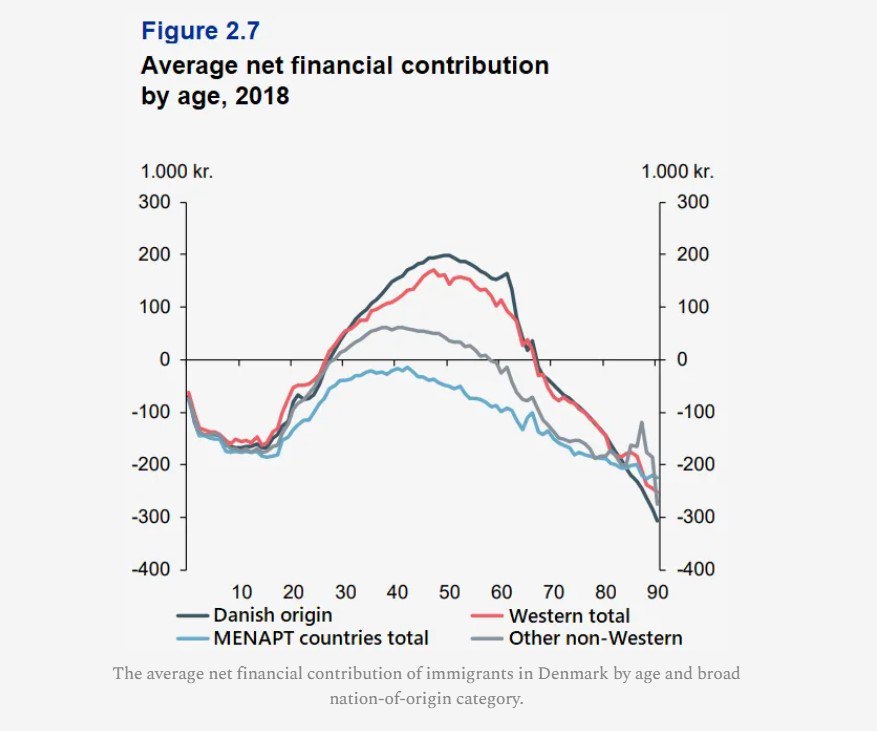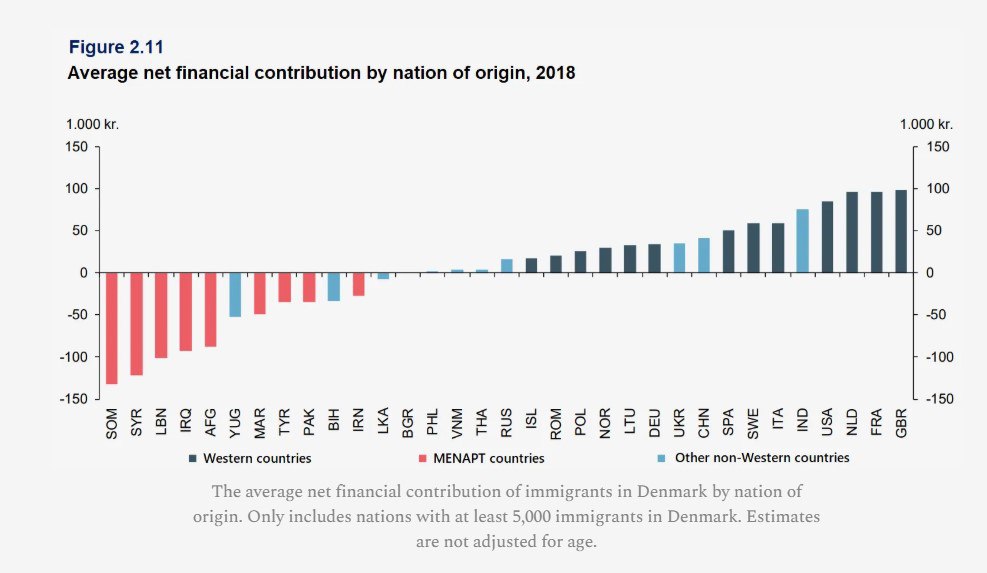In 2018, Denmark’s statistical office published a large-scale study on the net fiscal contribution of various population groups, from indigenous people to immigrants from different regions of the world.
According to the report, the total contribution of native Danes amounted to +41 billion Danish kroner, while the cumulative balance of migrants and their descendants was negative at –24 billion kroner. These figures sparked lively debate in European political and economic circles, as they reflect not so much the issue of ethnic origin as structural differences in employment levels, tax revenues and social benefits.

Breakdown by Region of Origin
The study divided migrants into three broad categories:
- those from Western countries (EU, North America, Australia);
- immigrants from MENAPT countries (Middle East, North Africa, Pakistan and Turkey);
- immigrants from other non-Western countries.
It was found that migrants from the MENAPT region are the most economically vulnerable. Their cumulative contribution to the budget remains negative even in the second generation, which indicates protracted difficulties with integration into the labour market.
By comparison, migrants from Eastern Europe and some Asian countries (e.g. India and China) show a positive net contribution, which is associated with higher labour force participation, vocational training and less dependence on social benefits.

Demographic Context
It is important to understand that a negative balance is observed among children and elderly people in all groups, which is natural for any demographic model. However, the economic sustainability of the system requires that the working-age generation compensate for these costs through taxes and productivity.
From a long-term strategy perspective, EU countries seek to attract those who can integrate into high-tech and tax-active sectors, rather than increase the burden on the social system.
The Danish study prompted a rethinking of migration policy across Northern Europe. The issue of qualitative selection of migration flows based on economic, educational and cultural parameters of integration has come to the fore. In this context, the most promising partners for European economies could be the countries of Eastern Europe and East Asia, where educational standards and work ethic are closer to European ones, and the level of social adaptation is higher.



